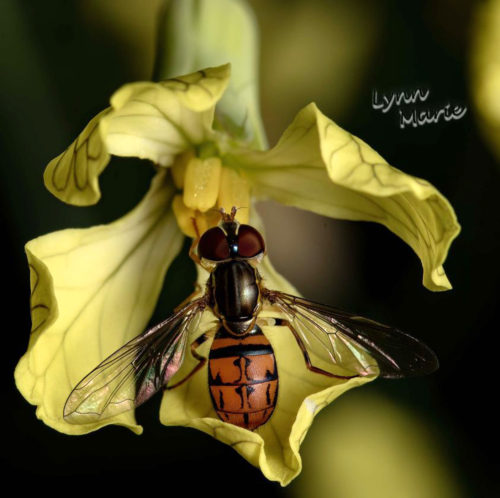The hoverfly (Allograpta obliqua) can be found in most of the continental United States, parts of Canada, and Mexico. It is a colorful and common fly in Florida.
Just like its name suggests, it can hover or fly backward. Adults usually visit flowers for nectar; they have also been seen around aphid (greenfly and blackfly) colonies, laying their eggs and feeding on honeydew secreted by the aphids. Adults aid pollination as they can pollinate some plants.
The larvae stage of this species are essential predators as they feed on aphids, which are crop-damaging insects. When larval populations are high, they can reduce aphid populations by 70 to 100%!
Adults occur throughout the year in northern Florida; they are more abundant during spring and summer. In southern Florida, they are also abundant during winter. Their life cycle varies from three weeks in summer to nine weeks in winter. They lay their eggs singly on a leaf or twig, where aphids are abundant. They hatch for two to three days during the summer and around eight days in the winter. When it is time for the larvae to pupate, they will fasten themselves to a leaf or twig. The pupal stage takes up to ten days in summer and 18 to 33 days in winter.

